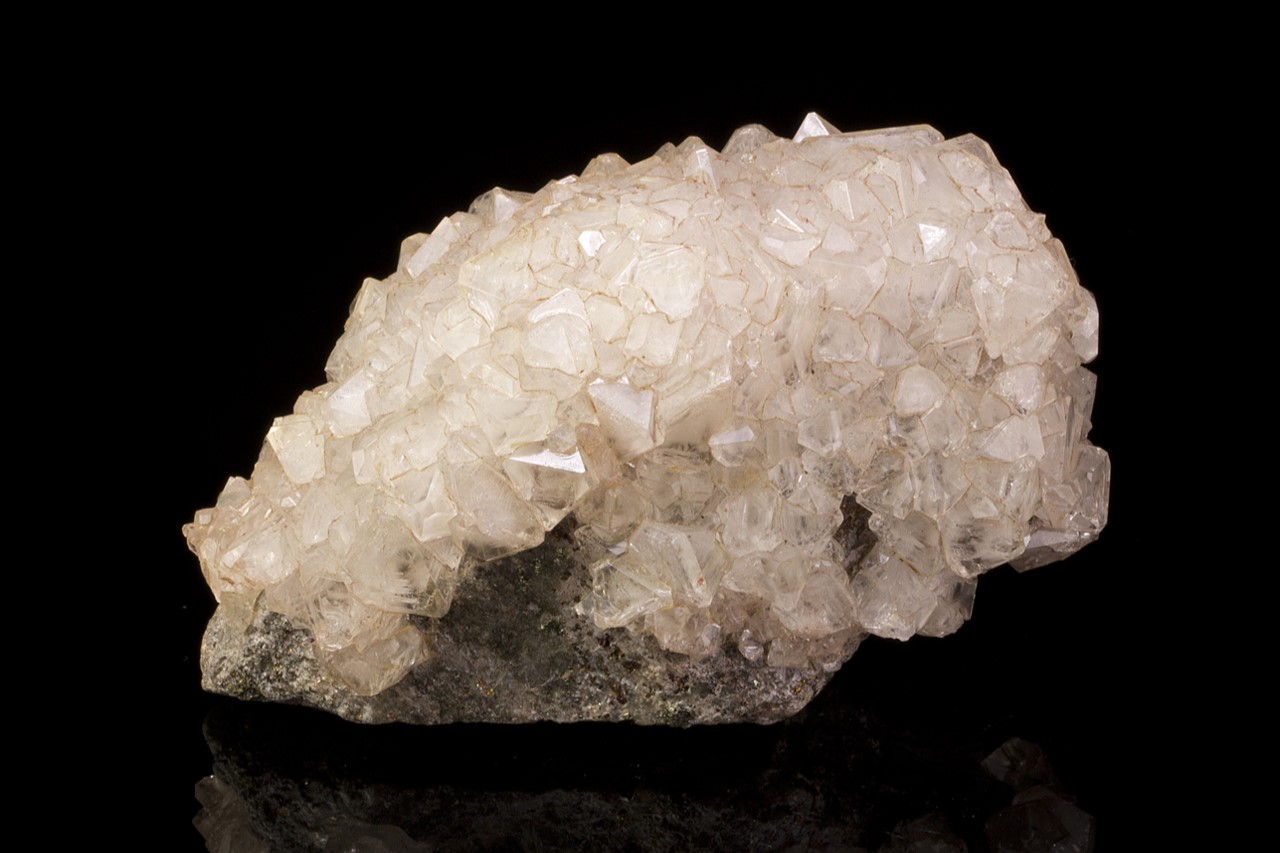
What is Alunite? Alunite is a fascinating mineral with a rich history and significant economic value. Formed through the alteration of volcanic rocks, this hydrous sulfate mineral boasts a complex crystal structure and a unique composition of potassium, aluminum, sulfate, and hydroxide ions. Found in various geological settings, alunite often associates with minerals like quartz, pyrite, and gypsum. Its economic importance stems from its aluminum and potassium content, essential for industries producing aluminum and fertilizers. Notable deposits in places like Marysvale, Utah, and Goldfield, Nevada, highlight its global significance. Dive into these 35 intriguing facts about alunite to uncover its properties, formation, and applications.
Key Takeaways:
- Alunite is a valuable mineral formed from volcanic rocks, containing potassium and aluminum essential for making aluminum and fertilizers. It's found in places like Utah and Nevada, and its thermal properties make it significant for industrial use.
- Alunite's unique composition and properties provide insights into the geochemical conditions of its formation, making it crucial for understanding hydrothermal alteration processes and its economic significance for industrial applications.
What is Alunite?
Alunite is a fascinating mineral with a rich history and significant economic value. Let's dive into some key facts about this unique mineral.
-
Formation and Composition: Alunite forms through the alteration of volcanic rocks. It consists of potassium (K), aluminum (Al), sulfate (SO₄), and hydroxide (OH) ions.
-
Crystal Structure: This mineral belongs to the triclinic system, featuring a complex arrangement of atoms within its crystal lattice.
-
Economic Value: Alunite is valuable for its aluminum and potassium content, essential for producing aluminum and fertilizers.
Where is Alunite Found?
Alunite can be found in various geological settings, often associated with volcanic activity.
-
Occurrence: It is commonly found in areas with significant volcanic activity, such as Marysvale, Utah, and Goldfield, Nevada.
-
Association with Other Minerals: Alunite often forms alongside minerals like quartz, pyrite, and gypsum.
-
National Belle Mine: In Colorado, alunite is found in the National Belle mine, a notable location for this mineral.
What are the Properties of Alunite?
Alunite has unique properties that make it a subject of interest in mineralogy and geology.
-
Thermal Properties: When heated, alunite undergoes thermal expansion and dehydroxylation, losing its hydroxide ions and collapsing its crystal structure.
-
Geochemical Significance: The presence of potassium and aluminum in alunite indicates it forms in environments rich in these elements.
-
Formation Environment: Typically found in the oxidized zone of hydrothermal veins, where hot, sulfate-rich fluids alter surrounding rocks.
Why is Alunite Important?
Alunite's composition and properties make it significant for various industrial applications.
-
Aluminum Content: A crucial source of aluminum, vital for numerous industrial uses.
-
Potassium Content: Also a source of potassium, used in fertilizers and other applications.
-
Sulfate Content: High sulfate content is essential for the formation of alunite.
How Does Alunite Form?
Understanding the formation process of alunite helps in exploring its geological significance.
-
Hydroxide Content: Hydroxide ions are crucial for the stability of alunite's structure.
-
Isomorphous Replacements: Elements like aluminum can be replaced by iron, affecting the mineral's chemical formula and properties.
-
Non-Stoichiometric Composition: Due to isomorphous replacements, alunite often has a non-stoichiometric composition.
How is Alunite Analyzed?
Various techniques are used to analyze the composition and properties of alunite.
-
EPMA Analysis: Electron Probe Microanalysis reveals small amounts of calcium and iron in alunite.
-
FT-IR Spectra: Fourier Transform Infrared spectra show the presence of sulfate and hydroxide groups.
-
DTA Curve: Differential Thermal Analysis curves indicate the thermal behavior of alunite.
Where are Significant Alunite Deposits?
Several regions around the world have significant deposits of alunite.
-
Fanshan Alunite Deposit: Located in China, this deposit has an average grade of 32.5% to 39%, with some sections exceeding 45%.
-
Goldfield Alunite Deposit: In Nevada, this deposit is associated with the intense alteration of rocks near ore bodies.
-
Cripple Creek Alunite: Found in Colorado, this alunite follows vein fissures and resembles kaolin.
What are the Industrial Applications of Alunite?
Alunite's composition makes it valuable for various industrial applications.
-
Silverton Alunite: In Colorado, alunite is associated with enargite, indicating its formation in hydrothermal veins.
-
Marysvale Alunite: Extensively studied in Utah, these deposits are of potential economic value for aluminum and potassium compounds.
-
Alunite in China: The Luzong Basin in China has significant alunite deposits, providing valuable insights into its formation environment.
What are the Thermal Properties of Alunite?
Alunite's thermal properties are crucial for understanding its behavior under different conditions.
-
Thermal Expansion: When heated, alunite undergoes a phase transition, losing its hydroxide ions and collapsing its crystal structure.
-
Dehydroxylation: This process involves the loss of hydroxide ions when alunite is heated, affecting its thermal stability.
-
Crystal Structure Stability: The stability of alunite's crystal structure is influenced by its composition and the presence of hydroxide ions.
How Does Alunite Maintain Charge Balance?
Alunite's structure requires a balance of charges to remain stable.
-
Isomorphic Replacements and Charge Balance: Substitution of aluminum with iron affects the charge balance, with excess water compensating for deficiencies.
-
EPMA Results: Small amounts of calcium and iron in alunite influence its overall composition and properties.
-
FT-IR Spectra Indications: Specific peaks in the FT-IR spectra indicate the presence of sulfate and hydroxide groups.
What Do DTA Curves Reveal About Alunite?
DTA curves provide insights into the thermal behavior of alunite.
-
DTA Curve Indications: Exothermic valleys and weight loss slopes suggest a favorable formation environment for alunite.
-
Mineralogical Interest: Alunite's complex crystal structure and isomorphous replacements make it significant in mineralogical studies.
-
Economic Geology: Extensive deposits of alunite make it important for industrial applications, particularly for aluminum and potassium compounds.
Why is Alunite Geochemically Significant?
Alunite provides valuable insights into the geochemical conditions of its formation.
-
Geochemical Significance: The presence of potassium, aluminum, sulfate, and hydroxide ions indicates that alunite forms in environments rich in these elements.
-
Formation Processes: Alunite forms through the alteration of volcanic rocks by hot, sulfate-rich fluids, making it crucial for understanding hydrothermal alteration processes.
Alunite's Importance and Applications
Alunite stands out as a fascinating mineral with a wealth of properties and uses. Its formation through volcanic rock alteration and its composition of potassium, aluminum, sulfate, and hydroxide ions make it a subject of great interest. Found in various geological settings, alunite often associates with other minerals like quartz and pyrite. Its economic value is undeniable, providing essential aluminum and potassium for industries. The mineral's thermal properties and geochemical significance offer insights into geological processes. Extensive deposits in places like Marysvale, Utah, and Goldfield, Nevada, highlight its abundance. Techniques like EPMA and FT-IR spectra help analyze its composition, while DTA curves reveal its thermal behavior. Alunite's complex structure and isomorphous replacements make it a key mineral in both mineralogical and economic studies. Understanding alunite enriches our knowledge of Earth's geological processes and industrial applications.
Frequently Asked Questions
Was this page helpful?
Our commitment to delivering trustworthy and engaging content is at the heart of what we do. Each fact on our site is contributed by real users like you, bringing a wealth of diverse insights and information. To ensure the highest standards of accuracy and reliability, our dedicated editors meticulously review each submission. This process guarantees that the facts we share are not only fascinating but also credible. Trust in our commitment to quality and authenticity as you explore and learn with us.


